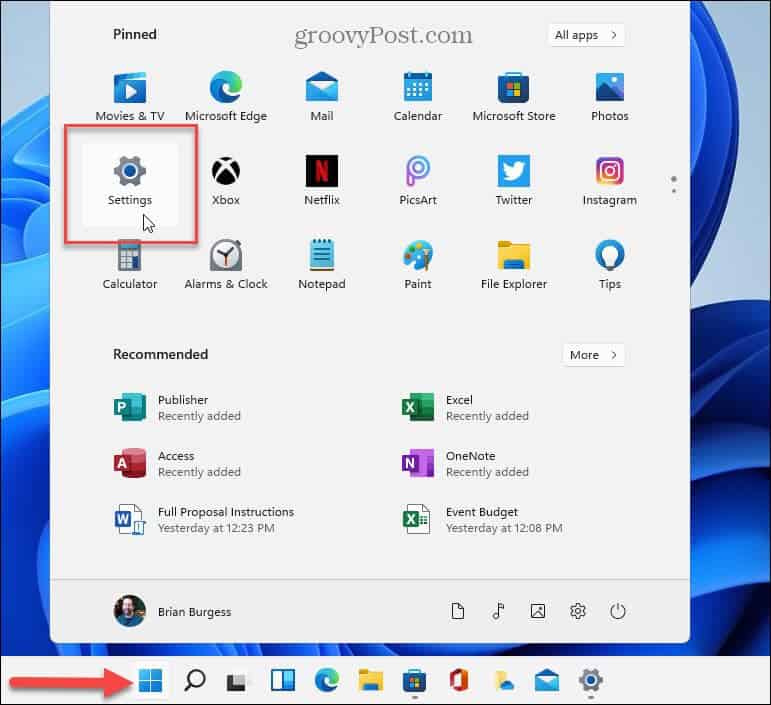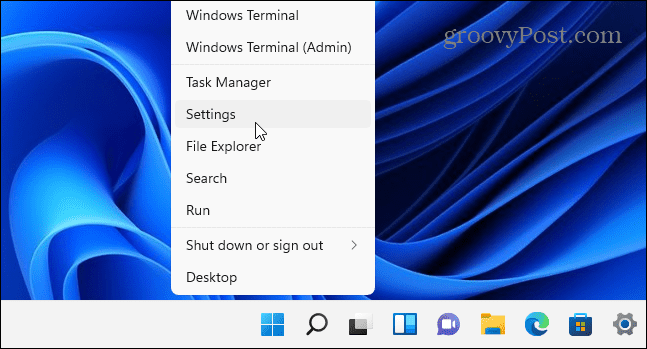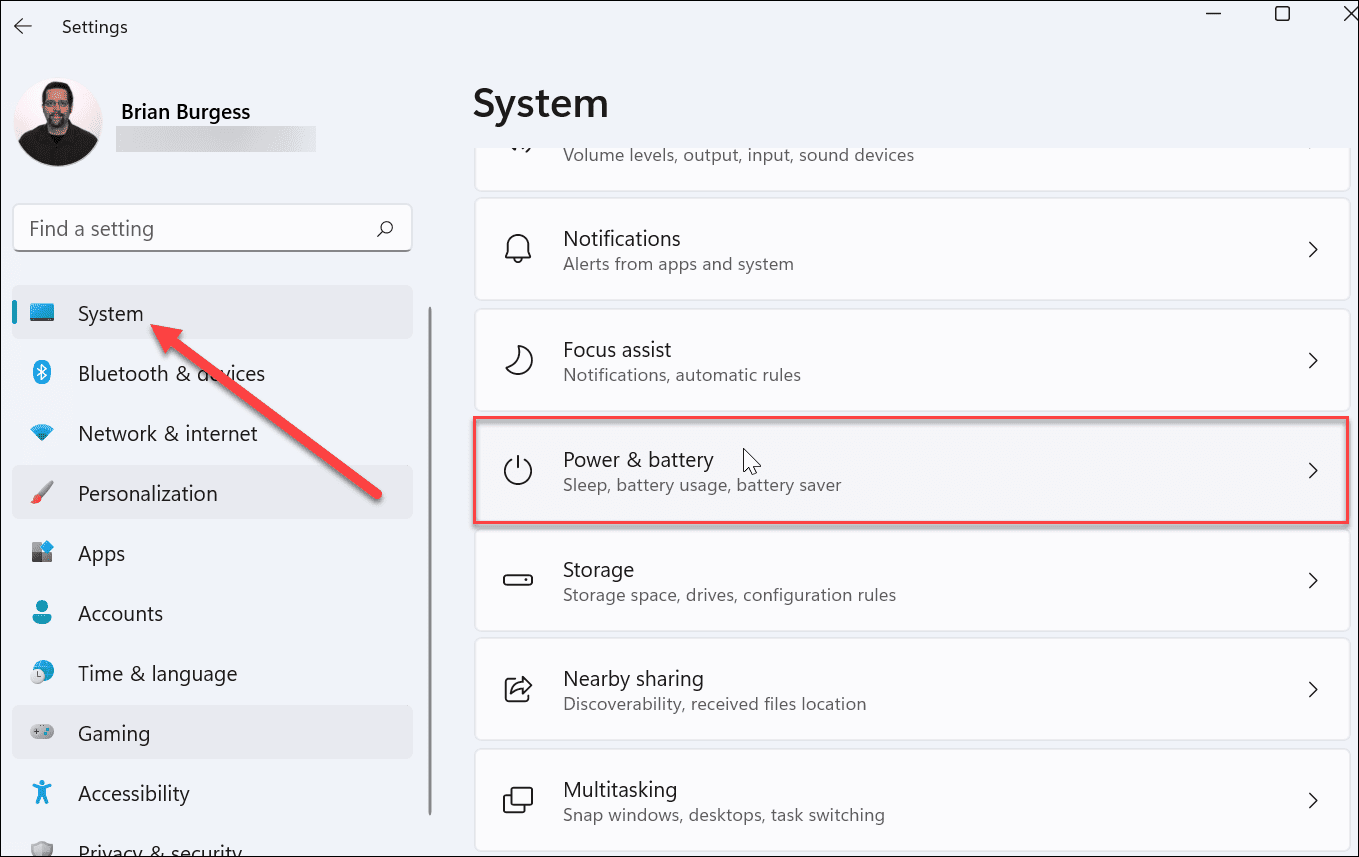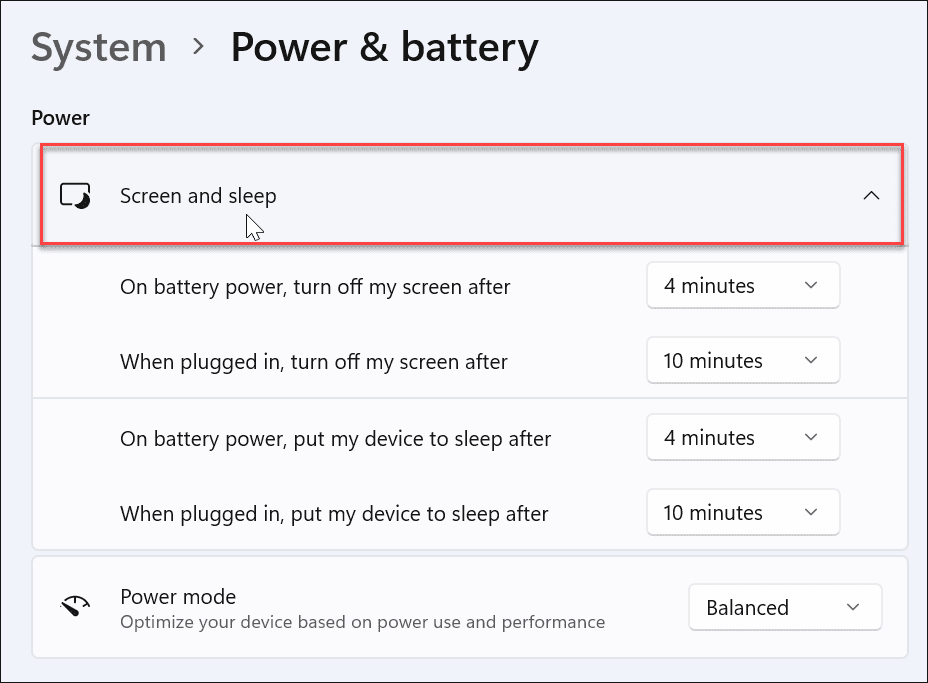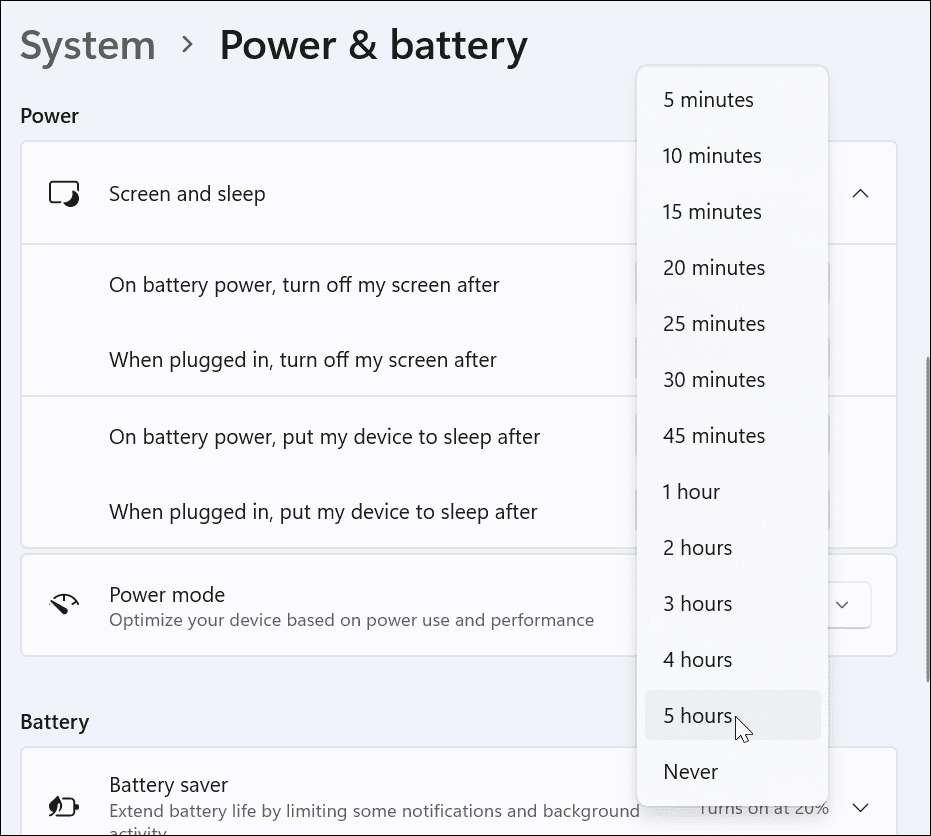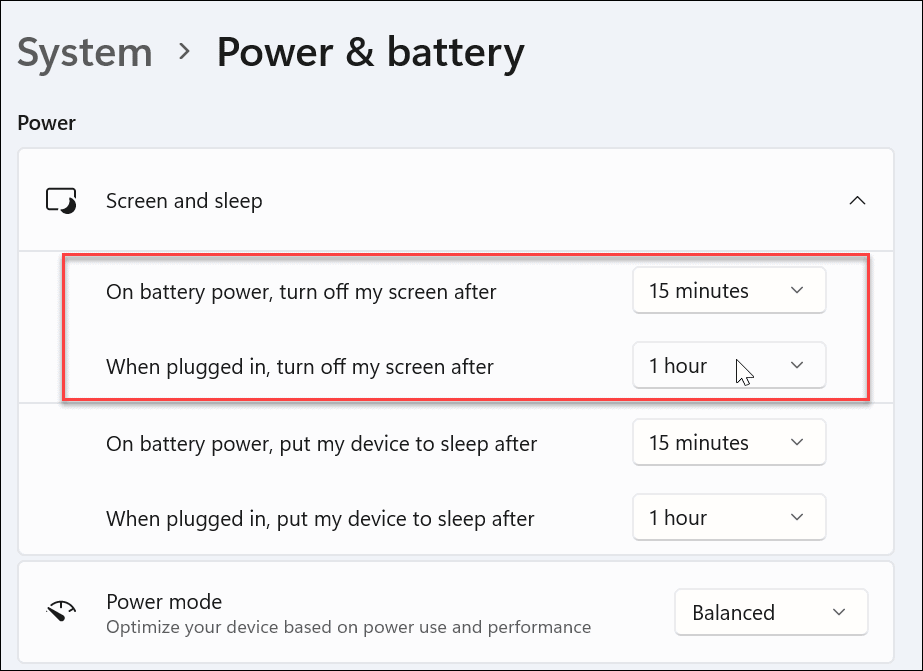Windows 11 puts your device into a low-power mode that shuts down specific hardware (including your screen) to save battery power. It also allows you to get back to your work more quickly than if it were in Hibernate Mode. If you aren’t happy with the default Sleep Mode settings, you can adjust it for what works best for you. Here’s how.
Manage Sleep Mode on Windows 11
To manage your Sleep Mode settings on Windows 11, you’ll need to open the Settings menu. Launch Settings by clicking the Start button and pressing Settings in the pinned list. Alternatively, press Start, then type Settings, then click the app in the search list. Alternately, you can use the keyboard shortcut Windows key + I to open Settings directly.
Tip: It’s also worth noting you can open Settings with a right-click of the Start button. From there, press Settings from the menu that pops up.
When the Settings app opens, click System from the list on the left. On the right, scroll down and click Power & Battery.
Next, expand the Screen and Sleep section by clicking it. You’ll see several options to manage power settings. If you’re on a laptop, you should have four options. On a desktop PC, there will only be two options.
Now, choose how long it takes for your laptop to go to sleep. Click the dropdown menus next to “On battery power, put my device to sleep after” and adjust the length of time your PC goes to sleep when it is plugged in. You can select from Never, so it never goes to sleep, or select a time up to five hours.
You can also manage when Windows 11 turns off your screen. To do this, adjust the dropdown menus next to “Turn off my screen after.” Again, here you can select as little as one minute to five hours or select “Never” if you want to keep the screen on constantly. You can choose between the “Battery power” or “Plugged in” options.
Managing Windows 11 Power Settings
That’s all there is to it—your computer should now go into Sleep Mode after the amount of time you specify. You can close out of Settings, and the changes you made will be saved. If you want to change the time settings later, go to Start > Settings > System > Power & Battery > Screen and Sleep to manage times. For more tips on how to use Windows 11, check out how to find your Windows 11 system specs, or take a look at how to manage Active Hours to avoid annoying Windows Update restarts. Comment Name * Email *
Δ Save my name and email and send me emails as new comments are made to this post.
![]()

